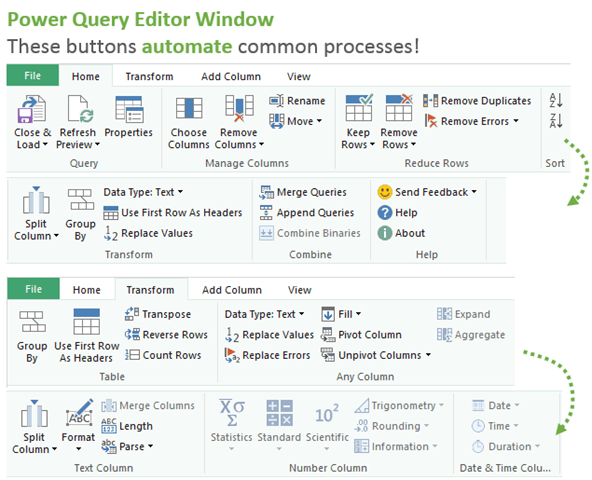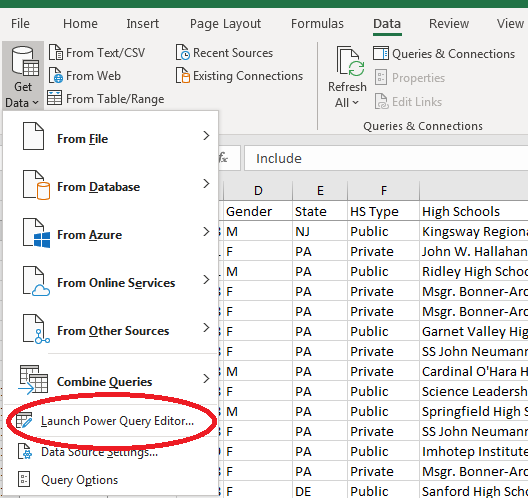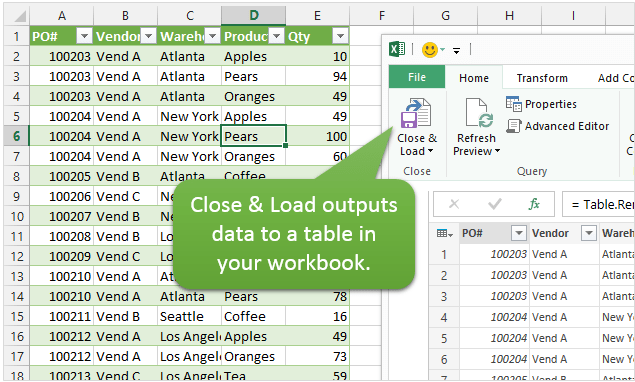

This will save the newly merged data as a connection. Here are the steps to save this merged table (with data from Sales_Data and Pdt_Id table) as a connection: You need to save this resulting table as a connection (so that we can use it to merge it with Table 3). Now if you only want to combine two tables, you can load this Excel you’re done.īut we have three tables to merge, so there is more work to be done. This would give you the resulting table that has every record from Sales_Data table and an additional column that has product ids as well (from the Pdt_Id table).

From the options box that opens, uncheck all the column names and only select Item.In the additional column (Pdt_Id), click on the double pointed arrow in the header.Now the process of merging the tables will happen within the Query editor with the following steps: The above steps would open the Query editor and show you the data from the Sales_Data with one additional column (of Pdt_Id). In the ‘Join Kind’ drop-down, select ‘Left Outer (all from first, matching from second)’.In ‘Pdt_Id’ preview, click on the ‘Item’ column. Doing this will select the entire column.Doing this will select the entire column. In ‘Sales_Data’ preview, click on the ‘Item’ column.

EXCEL QUERY EDITOR HOW TO
Now let’s see how to merge the Sales_Data and Pdt_Id table. So when you’re done, you will have three connections (with the name Sales_Data, Pdt_Id, and Region). Repeat the above steps for Table 2 and Table 3. The above steps would create a connection with the name Sales_Data (or any name that you have given to the Excel Table).

It isn’t mandatory to rename these tables, but it’s better to give names that describe what the table is about.Īt one go, you can merge only two tables in Power Query. I have named these tables as shown below: Based on your version, some images may look different (image captures used in this tutorial are from Excel 2016). Note: Power Query can be used as an add-in in Excel 20, and is an inbuilt feature from Excel 2016 onwards. Also, note that there should be no repetition in these connecting columns. For example, in Table 1 and Table 2, the common column is ‘Item’, and in Table 1 and Table 3, the common column is ‘Sales Rep’. In this tutorial, I will show you how to merge these three Excel tables into one.įor this technique to work, you need to have connecting columns.
EXCEL QUERY EDITOR CODE
Or if you’re a VBA whiz, you can write a code to do this.īut these options are time-consuming and complicated as compared with Power Query. Now you can rely on VLOOKUP or INDEX/MATCH to do this. You’ll have to map the relevant records from Table 1 with data from Table 2 and 3. To get all this information into a single table, you will have to merge these three tables so that you can then create a Pivot Table and analyze it, or use it for other reporting/dashboarding purposes.Īnd by merging, I don’t mean a simple copy paste. This information is provided as separate tables as shown below: This table has the data I want to use, but it’s still missing two important columns – the ‘Product Id’ and the ‘Region’ where the sales rep operates. In case you prefer reading the text over watching a video, below are the written instructions. One of the things where Power Query can save you a lot of time is when you have to merge tables with different sizes and columns based on a matching column.īelow is a video where I show exactly how to merge tables in Excel using Power Query. With Power Query, working with data dispersed across worksheets or even workbooks has become easier.


 0 kommentar(er)
0 kommentar(er)
